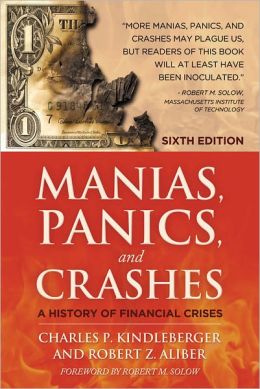I think the following is the model proposed in Manias, Panics and Crashes: A History of Financial Crises by by Charles P. Kindleberger and Robert Z. Aliber.
1. There is some exogenous shock (policy switching, technology, financial innovation).
2. Depending on the nature of the bubble"
- Firms take advantage of the new opportunities creating new products or expanding production.
- Builders expand the production of housing and new buyers enter the housing market.
So far, so good. We want the economy to expand taking advantage of new profit opportunities.4. The boom leads to a system with positive feedback paths, including unjustified lending, irrational investment, speculation and criminal behavior, creating a mania of rapidly increasing prices.
Woops, now overtrading will lead to prices for the stocks or real property that exceed their sustainable value.
The problems are exasperated by touts whose advice adds to the crowd mentality, media that fail to provide good information to buyers and sellers, and nominal agents whose incentives differ from those of their clients.5. The book is concerned with bubbles that affect several countries; In these multinational events, overtrading spreads from one market to another (psychological links and others).
6. At the peak some insiders leave the market, there is "financial distress" and a bankruptcy or the revelation of a swindle leads to the final stage; the rush for liquidity.
And here we see panic, losses to many participants in the bubble's expansion, and if the bubble is large enough, damage to the greater economy.7. The panic (or "revulsion") feeds itself until prices become so low that people are tempted to once again go into less liquid assets, trade is cut off or a lender of last resort convinces the market that three is enough money for all.
I suppose that if the overshoot is small and the panic short, the effect may not be all bad. The economy may reach its stable value quickly. However, it it is large and the panic long and deep, the result may be very bad indeed.The book's authors state that "our conclusion is that money supply should be fixed over the long run but be elastic during the short-run crisis. A lender of last resort should exist, but his presence should be doubted."
The model presented in derived from "Not bad, but more popular than it deserves: A Review of 'Manias, Panics and Crashes: A History of Financial Crises'"

No comments:
Post a Comment